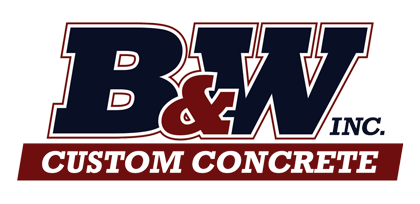What Type is Best for What Use
It’s hard to believe, but all concrete is not the same. There are several types so depending on where the concrete is being used, experts need to know which one works best.
Normal Strength Concrete & Ordinary or Plain Concrete
Both of these contain 1 part concrete, 2 parts sand, and 4 parts aggregate. Normal strength is used for pavements or buildings where stretching and tension are not high. Plain or ordinary concrete is used in the construction of dams, as the durability rating is good for that use.
Reinforced Concrete
This is widely used in industry and modern construction. It is called reinforced because wires, steel rods, or cables are added to it before it sets.
Pre-stressed Concrete
Many concrete projects use pre-stressed concrete, which is concrete using bars or tendons that are stressed before the actual application. After it sets it is put into compression making the lower section of the unit stronger. It is used for bridges.
Precast Concrete
This concrete is also created, then assembled onsite. Its ingredients consist of materials such as pumice, clays, and shale. It’s used for long-spanning bridges and building blocks.
High-Density Concrete
High-density concrete is frequently used in the construction of atomic power plants to help combat radiation leaks. It’s normally made up of crushed rock.
Air-Entrained Concrete
Air-entrained concrete holds billions of microscopic air cells that relieve internal pressure. These air cells provide tiny chambers where water expands when it freezes.
Ready-Mix Concrete
You’ve seen the cement trucks on the road. At the worksite, the cement is used immediately. If it takes too long to get to its destination, the concrete is no longer viable. It is used for buildings, roadways/parking lots, and much more.
Volumetric Concrete
Volumetric concrete requires specialized trucks that mix the concrete at the construction site, making it possible to use one truck to produce two different mixes of concrete. It is useful in multi-projects where different types of concrete are needed.
Decorative Concrete
Decorative concrete is a great way to add luster to dull surfaces or structures, such as swimming pools and flooring.
Rapid-Set Concrete
The name says it all. It has faster set times and is resistant to low temperatures, so you can do your project in any climate or weather conditions.
Smart Concrete
This is the concrete of the future. It can sense structural flaws and allows engineers to check the health of structures after an earthquake. It is promising for future projects in cities where earthquakes are prevalent.
Pervious Concrete
This is used to build roads and pavements as it helps with pooling water on roadways and runways reducing hydroplaning, tire spray, and snow buildup.
Pumped Concrete
Pumped concrete is used on floors of tall buildings. It is pumped through a pipe to upper floors.
Limecrete
Instead of using cement, limecrete uses lime and glass fiber or sharp sand as there are several advantages It is used for vaults, domes, radiant floor heating, and construction floors and is environmentally friendly.
Roll Compacted Concrete
Roll-compacted concrete is a strong, dense concrete that is used on airport runways and highways that experience heavy volumes of traffic and carry heavy loads.
Glass Concrete
This uses recycled glass. This concrete is used to decorate facades. It is shiny and the glass gives it a splash of color.
Asphalt Concrete
More commonly known as asphalt or blacktop, this dark mineral is used anywhere pavement is warranted. It’s durable, flexible, and permeable. Different mixtures are used for different areas.
Shotcrete Concrete
The basic difference between this and other forms is the way it is applied. Because it requires higher air pressure, the set process happens at the same time as the application.

